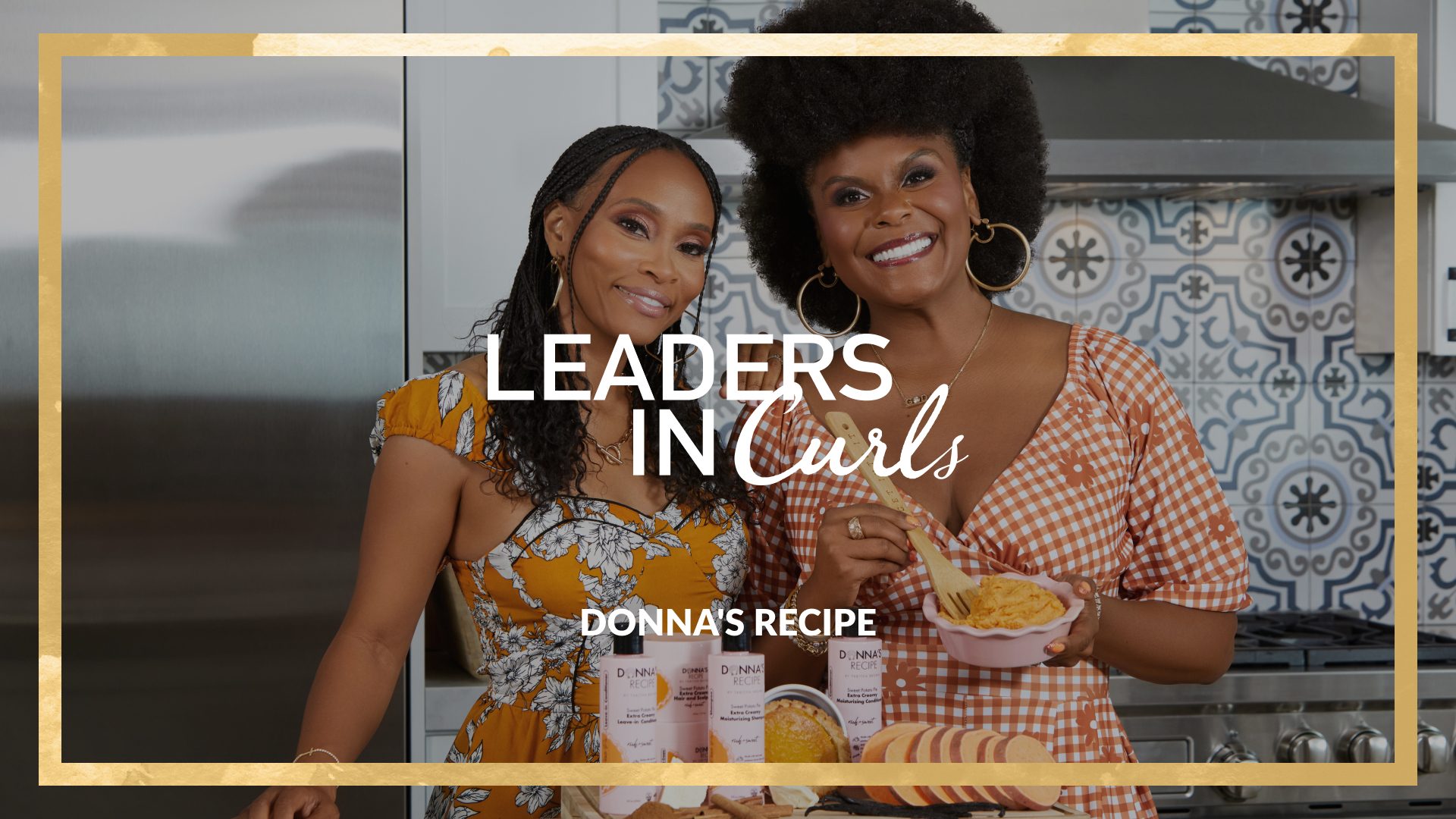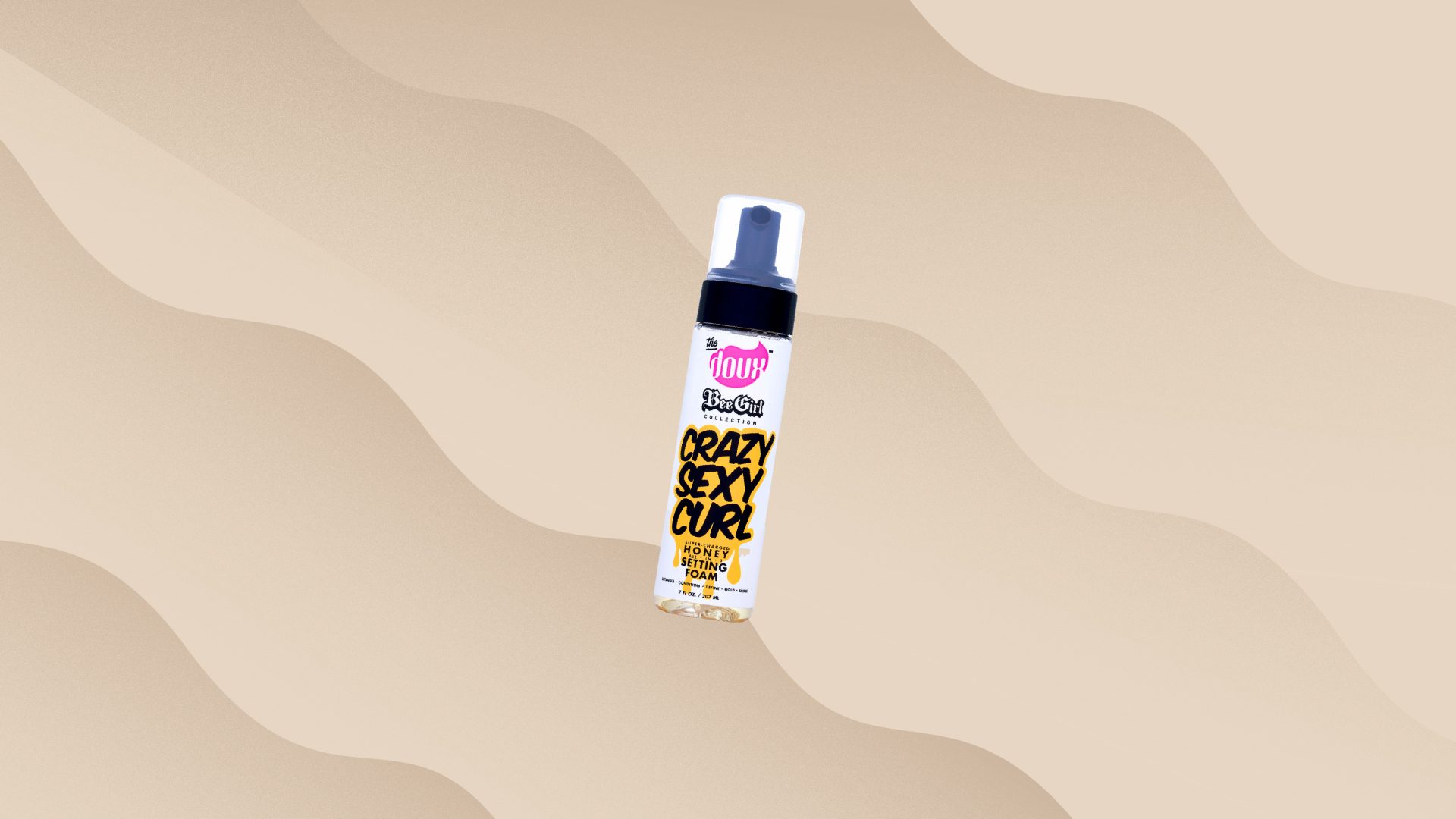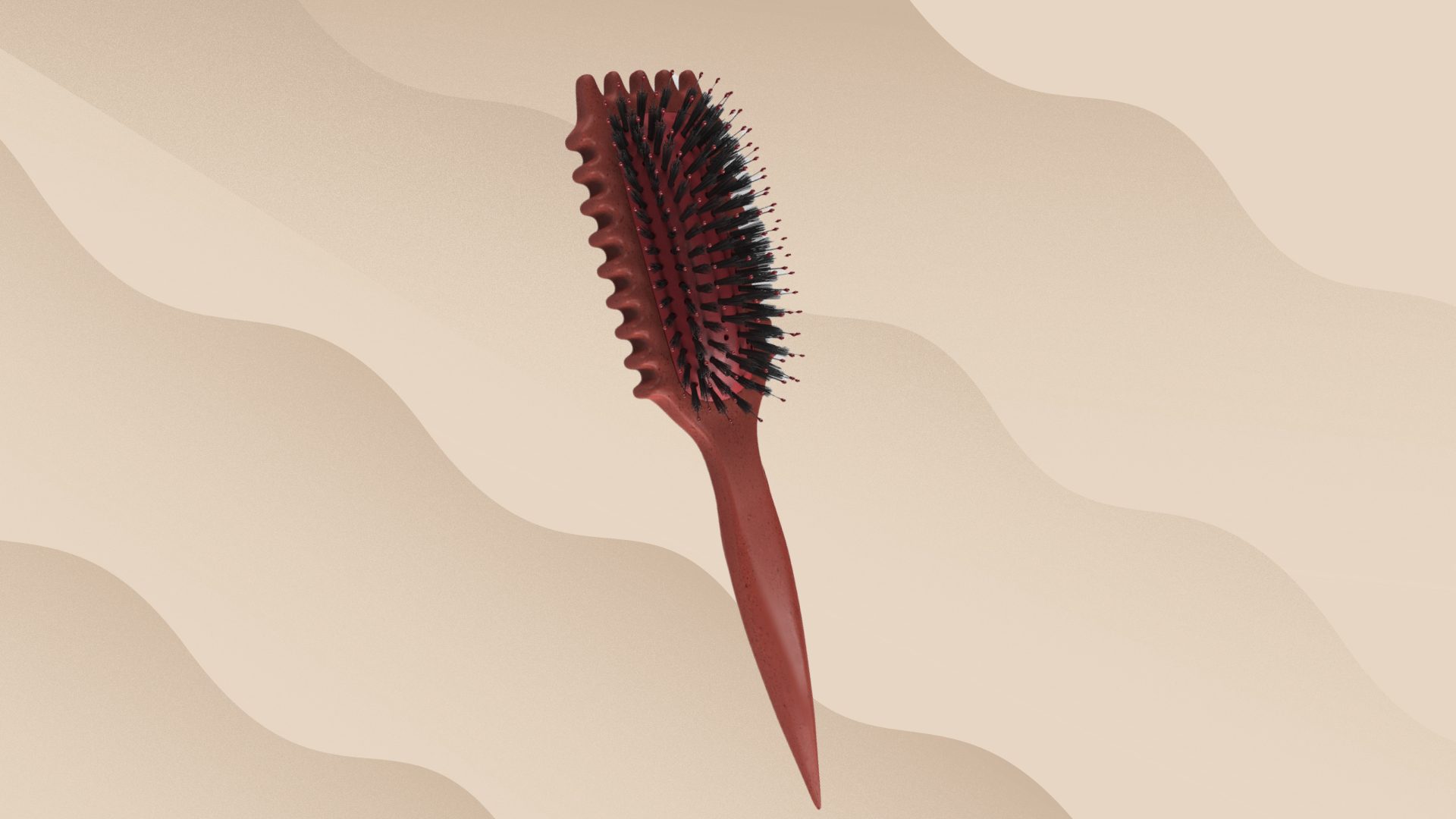
Jennifer Charan stands on business. As a professional hairstylist, hair care expert educator, and content creator, Charan is passionate about helping people of all textures understand the essentials of hair education. As the creator of Haiirology, she’s dedicated her professional career and business to helping individuals have accessible resources to improve their hair health from a licensed hairstylist.
Below, Charan opens up about her career journey, Haiirology, hair loss myths, and more.
Tell us briefly about your career as a hairstylist and who inspires your career.
I’ve been in the hair industry since I was 14 years old. My passion for hairstyling and hair health started early—I’d always ask my hairstylist tons of questions whenever I went for an appointment. One day, she mentioned she needed some extra help on weekends, so I jumped at the chance and asked if I could assist her. She agreed, and that’s where it all began!
From 14 to 17, I handled the basics: booking clients, sweeping hair, and doing laundry. Eventually, I learned how to wash my hair. When I turned 18, I enrolled in hairdressing school while continuing to work at the salon. By then, I had started building a small clientele, offering blow-dries, haircuts, and even some coloring services.

Over time, I honed my skills and naturally began specializing in curly hair, keratin treatments, haircutting, and styling. My career was progressing beautifully, but everything changed when COVID hit. With salons closed and hairdressing on pause, I noticed a huge gap in the industry: clients weren’t getting proper education about their hair, and much of the advice online wasn’t coming from experts.
I wanted to change that. So, I launched my social platforms, Haiirologybyjen, and my blog, Haiirology.com, to provide reliable, easy-to-understand hair advice from a professional perspective. What started as a small initiative grew into an amazing, supportive community. Today, I educate online full-time and continue to do hairstyling part-time.
As for who inspires me, two people stand out right now: @ahappyjustin and @the.blonde.chronicles. I love how they’ve shown that you don’t have to follow the traditional path of being behind the chair all the time. They’ve turned their passion for hair into careers focused on education and creativity—and that’s something I aspire to do as well.
Image Source: @haiirology
How did you define the term “haiirology” and what does it mean to you?
For me, haiirology is all about the science and art of hair care. It’s not just about styling hair to look good—it’s about truly understanding your hair, from its health and texture to what it needs to thrive. When I created Haiirologybyjen, I wanted to build a space where people could learn how to care for their hair in a way that feels approachable and empowering.
To me, haiirology means bridging the gap between the technical knowledge of a hairstylist and the everyday struggles we all face with our hair. It’s about making expert advice accessible, breaking down the jargon, and offering practical tips that actually work. It’s also about celebrating the individuality of hair—because no two heads of hair are the same!
Ultimately, haiirology is my way of helping people feel confident and in control of their hair journey. Whether it’s through educating my community, creating content, or doing hair behind the chair, it’s all rooted in helping people love their hair and understand it better.
As the haiirologist, you provide all-inclusive hair education. Why should people invest in learning about their hair type and texture?
Understanding your hair type and texture is a game-changer! When you know what works for your specific hair, you can finally make confident, informed decisions about products, hairstyles, and how to care for your hair.
Take this, for example: you take the time to dive into learning about your hair and discover that you actually have two different curl patterns going on. Suddenly, it makes sense why none of your styling products have been giving you the results you’re after. That insight alone can help you choose the right products and techniques that actually work for your hair.
Image Source: @haiirologybyjen
On top of that, knowing your hair type and texture is key to having a healthy scalp. When you’re using products tailored to your hair’s needs, your scalp thrives—and a healthy scalp is the foundation of great hair. It’s the starting point for better growth, less breakage, and hair that feels and looks its best.
So, when you invest in understanding your hair, you’re not just learning—it’s like unlocking the secret to truly loving and caring for it!
We’ve seen a wave of conversation post-COVID regarding hair loss; why do you think this very sensitive subject has become more mainstream?
Hair loss has always been a sensitive topic—nobody wants to admit they’re losing their hair. But post-COVID, the conversation seems to have shifted, and I think platforms like TikTok played a huge role in that. During the pandemic, TikTok became a space where people shared their struggles, including hair loss. Suddenly, so many people realized they weren’t alone in their hair loss journey, and that sense of community made the topic less taboo and more mainstream.
I also think people are more willing to open up about hair loss now because they’re looking for solutions. Post-COVID, hair loss affected so many people due to stress, illness, or hormonal changes, and seeing others share their stories gave them hope that they could do something about it. At the end of the day, it’s not just about the hair—it’s about feeling confident again. And that’s what makes the conversation so powerful.

What are the common misconceptions about hair loss?
There are so many misconceptions about hair loss, and I hear them all the time! One of the biggest ones is that hair loss only happens to older people or men. The truth is, hair loss can affect anyone—regardless of age or gender. Stress, hormones, nutrition, and even the way you care for your hair can all play a role.
Another common myth is that hair loss products, such as shampoos or oils, will fix everything overnight. I wish it were that simple! While the right products can help, especially with scalp health, hair loss is often a sign of something bigger, like stress, postpartum changes, or an underlying health issue. It’s important to approach hair loss holistically, looking at your lifestyle, diet, and even how you’re treating your scalp.
People also tend to think hair loss is always permanent, which isn’t true. In many cases, it’s reversible! For example, if your hair loss is caused by stress or breakage from improper hair care, you can take steps to turn it around with a healthy routine.
Lastly, there’s this idea that if you’re losing hair, you must be doing something wrong. That’s just not the case. Hair loss can be genetic or triggered by things totally out of your control, like illness or medication. The key is not to panic but to figure out what’s causing it so you can take action.
Does hair loss affect certain hair types or demographics of people more than others?
Hair loss can happen to anyone, regardless of hair type or demographic. What does play a role in hair loss are factors like genetics, hormones, stress, health conditions, and even how you care for your hair.
For example, if someone with fine hair experiences breakage, it might look like they’re losing more hair simply because their strands are naturally more delicate. On the other hand, someone with thicker or curly hair might not notice hair loss right away because of the volume, but that doesn’t mean it’s not happening.
How can you distinguish between hair loss and a stressful season?
It can be tricky to tell the difference, but there are some key signs to look for. If it’s true hair loss, you’ll likely notice hair falling directly from the follicle, and in some cases, you might even see clumps coming out during washing or styling. It’s more persistent and doesn’t stop until the underlying cause—like hormones, genetics, or health issues—is addressed.
On the other hand, if you’re going through a stressful season, your scalp might feel tender, irritated, or even flaky. You’ll also notice more shedding than usual—it might seem like your hair is everywhere, from your brush to your pillowcase—but this type of shedding typically slows down once the stress passes.
Think of it this way: hair loss tends to have a deeper, long-term cause, while stress-related shedding is more like a temporary “shock” to your system.
What are the contributing factors that can lead to hair loss?
Hair loss can be caused by so many different factors, and sometimes, it’s a combination of things. Stress is a big one—whether it’s from work, life changes, or even just lack of sleep, it can throw your hair growth cycle off balance. Hormonal changes, like those that happen during pregnancy, postpartum, or menopause, are another major player.
Your diet is also key—your hair thrives on proper nutrition, so if you’re not getting enough essential vitamins and minerals, it can show up in your strands. Major lifestyle changes, like illness or weight loss, can also put your body into “shock mode,” leading to hair shedding.
And then there’s scalp care. Your scalp is the foundation of healthy hair, so if you’re not taking care of it properly—or worse, neglecting it altogether—it can lead to issues like clogged follicles or irritation, which can contribute to hair loss.
There are tons of hair loss tools, products, and regimens on the market; what are your recommendations for those wanting to invest in a product or tool or go the DIY method at home to combat hair loss?

A product line I recommend and genuinely stand by is the Vegamour GRO line. I’ve used everything from their GRO shampoo and conditioner to the scalp serum and gummies, and the results were amazing. Not only did I notice a difference in my hair health, but I’ve also heard such positive feedback from my community—friends, family, and followers who’ve tried it out. They’ve shared with me that, after using the Vegamour GRO line, they experienced less shedding, hair loss, and breakage, along with noticeable new hair growth and healthier overall hair. It’s a product line that truly delivers.
For those who love a good DIY solution, I’d suggest trying rosemary water. It’s so simple to make—just steep some fresh rosemary in hot water, let it cool, and transfer it to a spray bottle. You can spritz it onto your roots before washing your hair. Rosemary is known for its scalp-stimulating properties, which can help promote hair growth and reduce shedding.
What types of hairstyles should you avoid when experiencing hair loss and why?
If you’re dealing with hair loss, you’ll want to avoid super tight hairstyles, especially if you do them all the time. I know—it’s tough because sleek styles like slick-back buns and ponytails are so trendy right now. But here’s the thing: constantly pulling your hair tight puts a lot of tension on your scalp and hair follicles, which can lead to even more shedding.
The key is giving your hair and scalp a break. Opt for looser styles like soft braids, low messy buns, or just wearing your hair down. If you really love the sleek look, try only doing it once or twice a month until you see improvement in your hair loss.
If you’ve experience hair loss and are seeking out tools or resources to help with hair growth, check out Can Red Light Help With Hair Growth? Here’s the Truth.






